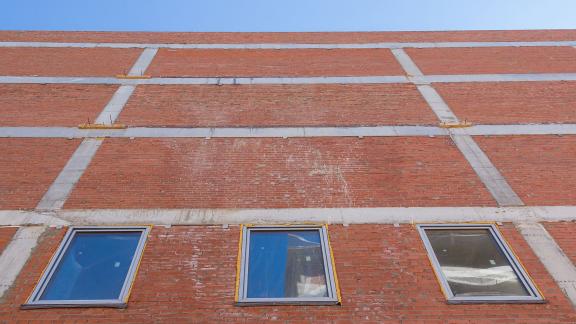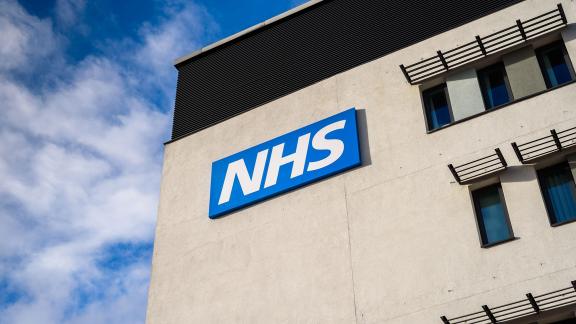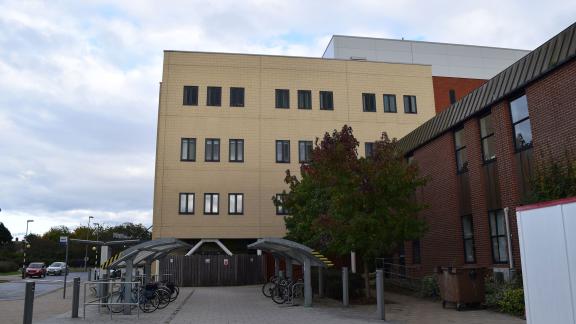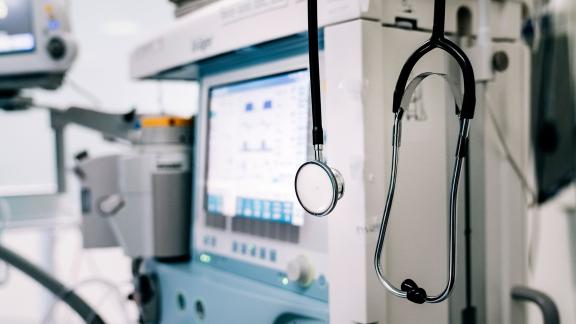Crumbling buildings and creaking systems: does the NHS invest enough in capital?

Leaking roofs, rundown buildings and outdated equipment belie one of the best health systems in the world. With pressure on services like never before, healthcare leaders are concerned that continued disinvestment will hinder efforts to reduce waiting lists, and put patients at risk.
Capital investment is how the system buys new IT equipment for diagnostics, new estates to expand and integrate care, and upgrade older estates to help fight health inequalities.
It has been shown to increase productivity, keep patients safer and regenerate communities. Yet in the run up to the Autumn Statement on 17 November, the prospect of much-needed funding appears on shaky ground.
Here we explore four main reasons why NHS capital investment has fallen behind the times – and at what cost. We also highlight the difference capital spending can make and what is needed to build a better future for the NHS.
1. Failure to invest
Successive UK governments have failed to invest enough in capital. As a proportion of GDP, the UK’s capital investment has remained far below (sometimes 50 per cent less) OECD peers from 2009/10 to 2019/20 inclusive. This trend became particularly acute during the 2010s, when the NHS capital budget was consistently raided to fill holes in the service budget.
The UK has one of the oldest health estates in the world. The National Audit Office found in 2020 that 14 per cent of the estate pre-dated the formation of the NHS in 1948.
2. Impact of inflation
While there was a welcome increase at last year’s Spending Review, inflation has hit the construction industry particularly hard. Construction economists at Arcadis have forecast 2022 inflation of 10 per cent for buildings and 12 per cent for infrastructure, driven by energy and material prices, general inflation and scarcity and disruption risks around materials.
3. Reduction in spending
Capital ‘deepening’, whereby the amount of capital investment per worker is increased, is how to achieve a more productive health service. Yet capital spending on NHS infrastructure, estates and maintenance remains behind other developed countries. There has been a reduction of 17 per cent in the value of capital per worker between 2010/11 and 2017/18. It’s one reason why historical productivity has only been 0.8 per cent per year.
4. Difficult to access
Our members consistently report that accessing capital remains difficult, and the business case sign-off process is opaque. It is critical that the government provides much quicker access to capital funding and invest in the estate, allowing integrated care systems to fulfil their potential to reduce health inequalities.
The government has set out an ambitious programme of capital development with the New Hospitals Programme. A key plank of the Conservative Party’s 2019 manifesto, the programme promises 40 ‘new’ hospitals by 2030. And yet the long-term funding for these projects remains unclear, hampered by a shorter capital funding window than the programme’s intended ten-year timeframe.
The programme also continues a focus on the acute sector, when there are significant unmet capital needs across mental health, community and primary care.
What’s the impact?
In a recent survey, 9 out of 10 of our members told us their efforts to reduce the size of the waiting list are being hindered by a decade-long lack of investment in buildings and estate.
NHS leaders have also sounded alarm over the dire state of many rundown buildings and the spiralling maintenance backlog. All of this is putting patients at risk. Newer facilities and modern diagnostic equipment would enable patients to be diagnosed and treated faster.
The Queen Elizabeth Hospital Kings Lynn NHS Trust’s ageing roof is at risk of collapsing and being held up by over 1,000 props. Last year the intensive care unit had to be evacuated and closed for three weeks because of fears the roof would collapse.
Pennine Care NHS Foundation Trust’s has been unable to roll out and invest in electronic patient records due to old and ineffective network connectivity. The trust has been left in limbo over capital funding which would finance improvements to its infrastructure. This has impeded staff from being able to make use of digital software on wards, which would improve patient care and staff efficiency.
A trust in the South West with Victorian-era estates has noted that lack of space and its old estate is effectively blocking up to 20 per cent of its bed capacity. Its hospital estate has buildings and services spread over a large area on one site, requiring transportation of patients outside. This takes time and impacts on productivity.
The return on investment
Where organisations have been able to unlock funding, improvements are making a big difference.
A new control room for the London Ambulance Service will boost IT resilience and enable the service to expand so it can manage more calls. The control room opened in June 2022 following a £9.6 million investment, and will also support faster dispatch of ambulances.
The Humber, Coast and Vale Health and Care Partnership is transforming or replacing existing hospitals to provide new state-of-the-art health and care campuses. This will improve patient care while also promoting research, innovation and greater employment prospects.
A diagnostic centre, hosted by the Royal Free London, has boosted diagnostic capacity across north central London and provided patients with quicker and more convenient access to tests for conditions such as cancer, heart and lung disease.
In Swindon, a new radiotherapy centre will provide patients and their families with a service closer to home, not only enhancing their care, but also reducing travel time and anxiety.
The Oxford Terrace and Rawling Road Medical Group in Gateshead, bolstered by capital investment from the NHS, has substantially redeveloped Bensham GP Practice to increase capacity and improve facilities. This level of investment in a deprived area has not only improved access to general practice but helped secure the practice as a local anchor institution and cornerstone of the community.
The addition of dedicated community space has strengthened the relationship to the local community by integrating community groups like crafts, mother and child groups and yoga into the practice.
Investment in Croydon Health Services’ emergency department expanded its capacity and enabled the addition of dementia-friendly rooms, mental health liaison rooms and better use of paediatric space.
A new facility at King's College Hospital provides a purpose-built, state-of-the-art centre dedicated to outpatient care. The building will consolidate a range of services into one, with the space freed up from the moves enabling improvements to the journey of patients requiring assessment or short-term treatment in hospital.
A springboard for regeneration
The NHS capital budget also has the potential to shape more than just health services, but also boost the regeneration of local areas and economies. Independent research shows that every £1 invested in the NHS creates £4 in the community its spent in.
How can the government support the NHS?
It is essential the government increases the capital budget to at least the real amount committed in October 2021’s Spending Review. Put simply, the failure to invest in capital for decades is making the NHS less efficient than it could be. Any efforts to reduce the allocated capital budget will be felt for decades to come with less efficient services and patient outcomes.




